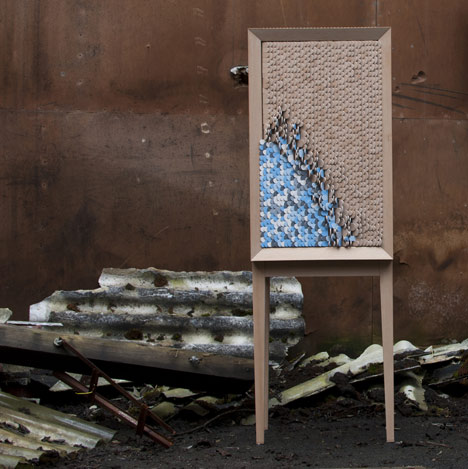
Dear Disaster by Jenny Ekdahl
This scale-covered cabinet by Swedish designer Jenny Ekdahl is intended to help victims of natural disasters to recover from their traumatic experiences.
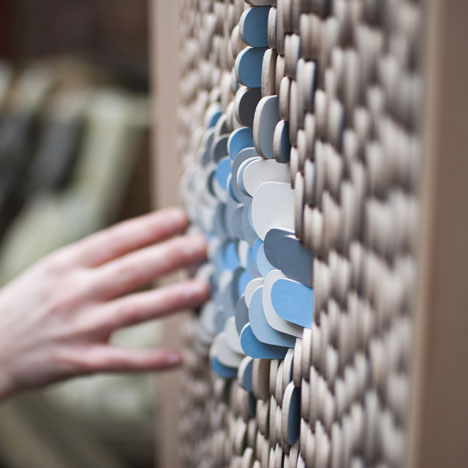
Ekdahl was inspired by the idea that creating graphs and diagrams of natural disasters can aid the psychological recovery process after the event.
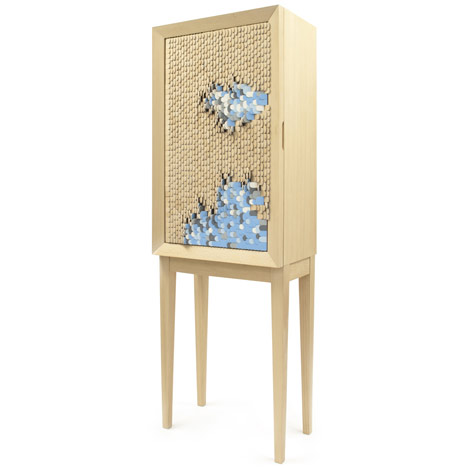
One side of each wooden scale is painted blue, white or grey, while the other side has been left plain, so that they can be flipped to create patterns based on water and waves.
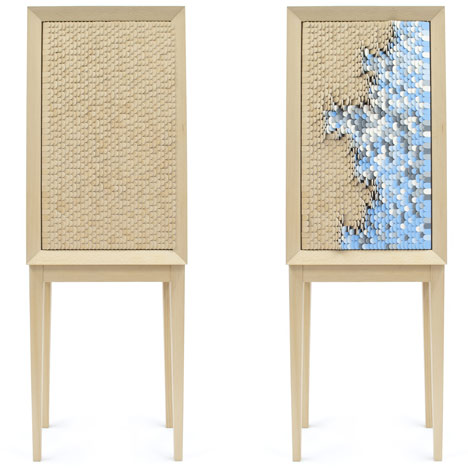
The beech wood cabinet is made up of more than 4000 parts in total.

Ekdahl recently graduated from the school of industrial design at Lund University in Sweden.
Here's some more information from the designer:
A natural disaster is an event that we associate with destruction, distress and sadness. But a natural disaster is also a phenomenon that fascinates, that is beautiful and at the same time terrifying. This contradicting love-hate relationship with nature was the starting point for my thesis work.
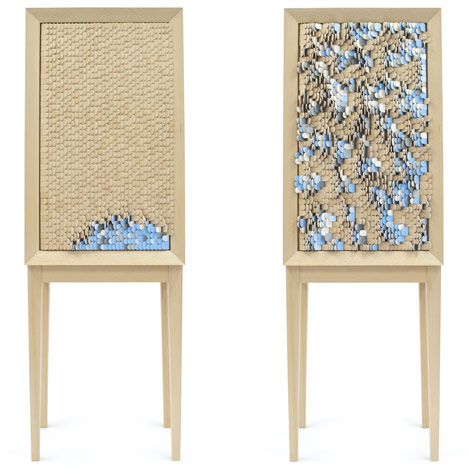
I wanted to create an object that could both illustrate my appreciation of natural forces as well as the psychological process of recovery after a natural disaster. By describing natural disasters with graphs, diagrams and simplified pictures they are said to make the events easier to embrace.
As part of my thesis work I therefore investigated what shapes, textures and patterns the human being automatically is intrigued by, such as rhythm, complexity, playfulness and the possibility to leave personal imprints on an object.
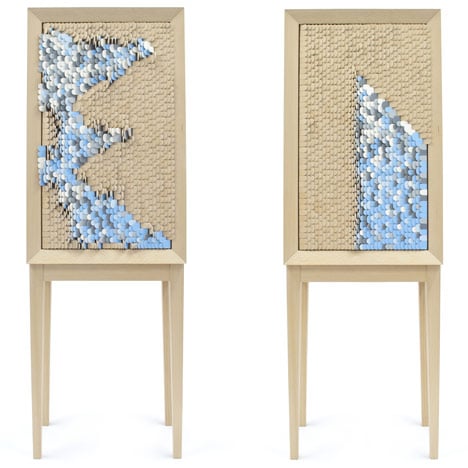
The interaction with the structure on the cabinet is a way for the user to tell her story, a conversation about sorrow and fear but also about finding meaning and regaining trust in nature after an incomprehensible event.
The function of the structure lies in mentally pleasing the user by showing her personality, feelings and personal marks, and it works as a tactile help by hiding at the same time as it highlights an event for the user, depending on what she decides to do with it. Sometimes you might talk about this process as turning pages in life and move on.
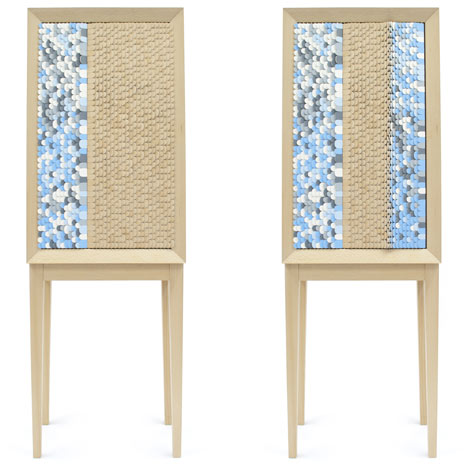
The cabinet represents water as well as the absence of water, a contrast that also defines a natural disaster. When mud is cracking of drought it produces a similar three-way pattern that water bubbles has, and therefore I chose to use this structure in my design.
The cabinet is made of beech wood with a moving structure on the door consisting of small, wooden scales. I both designed and made the cabinet myself that all together consists of more than 4,000 parts.